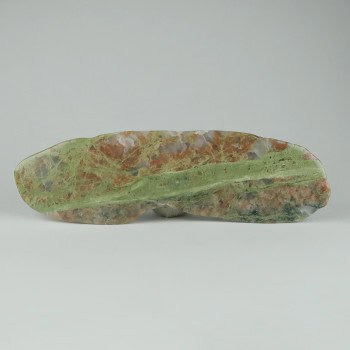Gneiss
The single most important thing I can teach you about gneiss is that its pronounced pretty much exactly like the word ‘nice’, meaning pleasant. Nys/Nise – a silent G.
Gneiss is a metamorphic rock which is mainly composed of quartz, feldspar, and mica. It may contain other minerals such as amphibole, kyanite, cordierite, biotite, staurolite, or garnet.
Showing the single result
Information about Gneiss
Appearance
Gneiss is a metamorphic rock which is mainly composed of quartz, feldspar, and mica. It may contain other minerals such as amphibole, kyanite, cordierite, biotite, staurolite, or garnet.
It is often banded or layered.
Uses and History
Gneiss is sometimes used as a decorative rock, and has often been used as a building material around the world, and as construction aggregate.
Mineralogy
Hazards and Warnings
Generally non toxic.
Almost all rocks, minerals (and, frankly, almost all other substances on earth) can produce toxic dust when cutting, which can cause serious respiratory conditions including silicosis. When cutting or polishing rocks, minerals, shells, etc, all work should be done wet to minimise the dust, and a suitable respirator or extraction system should be used.
Translations
Arabic:
Hindi:
Portuguese:
- Gnaisse
Bengali:
Indonesian:
Punjabi:
English:
- gneiss
Italian:
Russian:
- Гнейс
French:
Japanese:
- グナイス
Spanish:
German:
- Gneis
Korean:
- 편마암
Thai:
- ไนส์
Gujurati:
Mandarin Chinese:
- 片麻岩
Urdu:

